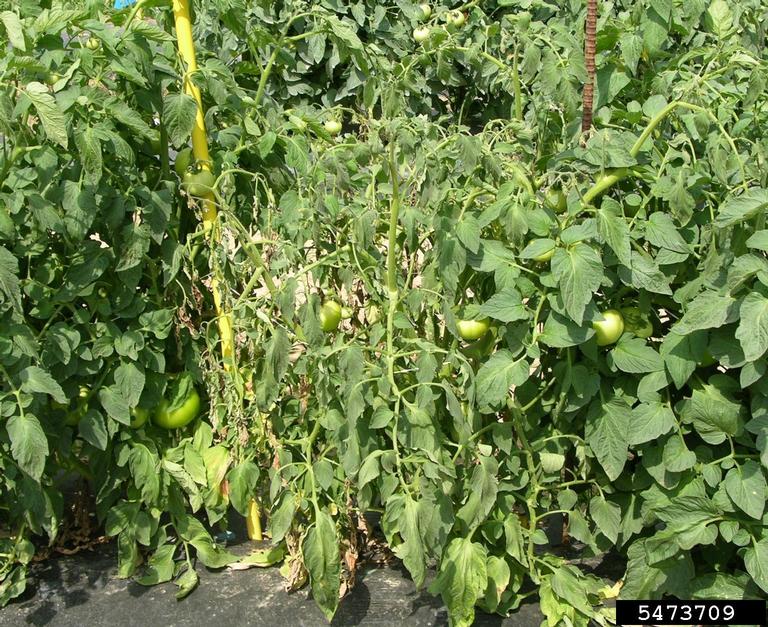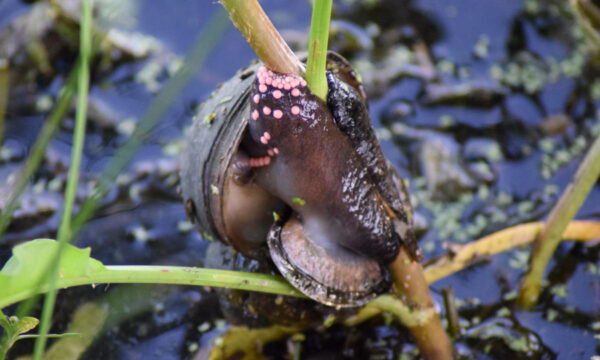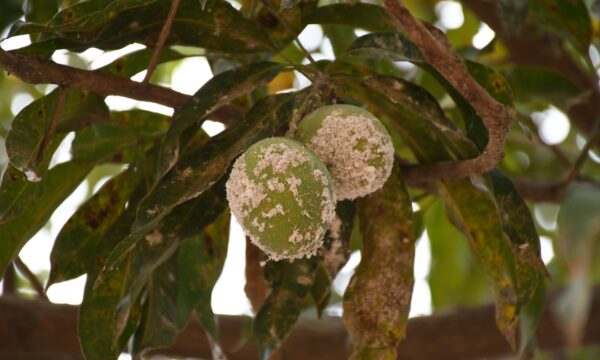Tomato is a popular and extensively cultivated crop due to its high potential to generate profits for smallholder farmers. However, there are a number of tomato pests and diseases that have the potential to severely diminish yields. Here we highlight four tomato pests and diseases to look out for.
Tomato leaf miner Tuta absoluta

Tuta absoluta (Phthorimaea absoluta) is a highly destructive tomato pest in many areas of the world. Native to Peru, it is a species of moth that can quickly damage entire tomato crops.
Tuta absoluta has a four-stage lifecycle: egg, larva, pupa and adult. It is the larval stage that causes the most damage. As they emerge from the egg, the larva ‘mine’ the plant. On leaves these mines are wide, silvery, and gradually become brown and necrotic. Leaf necrosis may result in leaf death or premature leaf drop. Mines in the fruit can lead to fruit rot. Other hosts of tomato leaf miner include aubergine (eggplant), peppers (capsicum) and potatoes.
Severe Tuta absoluta infestations can cause 100% yield loss of tomatoes. Knowing the life cycle of the tomato leaf miner can help with selecting and understanding management and control methods.
Find out more about the tomato leaf miner’s life cycle
Visit the Plantwise Knowledge Bank for further information on Tuta absoluta symptoms, diagnosis and management
Grey leaf spot on tomato Stemphylium solani, S.lycopersici

Grey leaf spot can affect the leaves of plants from seedlings to mature plant stage. Symptoms include the appearance of brown to black specks on both young and older leaves. These lesions increase slowly into 1-2 mm diameter round spots that remain brown or develop a grey center surrounded by a yellow halo. Sometimes the center of the spot dries and falls out, forming a shot-hole in the leaf. In some cases, the lesions can cause the entire leaves to turn yellow, then brown and drop. Defoliation can be severe, leading to sunburn damage of the fruit.
Visit the Plantwise Knowledge Bank for further information on grey leaf spots symptoms, diagnosis and management
Tomato bacterial wilt Ralstonia solanacearum

Image: Don Ferrin, Louisiana State University Agricultural Center, Bugwood.org
Bacterial wilt is a disease that can appear on all growth stages of tomato plants. The first symptom is wilting of leaves at the ends of branches. Two to three days later, the entire plant rapidly wilts without any prior yellowing of leaves. In some instances, the infected base of a stem becomes discoloured, turning brown.
Bacterial wilt disease lives in soil and enters through the plant’s root or stem. It is spread by contaminated water, soil, infected plant material, and equipment. It can also live in other solanaceous plants, such as aubergine, potato and pepper.
Visit the Plantwise Knowledge Bank for further information on bacterial wilt symptoms, diagnosis and management
Leaf curl disease on tomato

Leaf curl disease is caused by a virus and can cause severe tomato yield losses. The disease can be easily confused with other diseases and plant health problems such as tomato yellow top disease, low-temperature damage and poor soils. The distinctive feature of leaf curl, disease apart from the curling, is severe stunting of plants, particularly in seedlings.
Diseased plants grow slowly, have smaller yellow leaves, are stunted and produce less fruit. The edges of leaves curl unevenly in different directions and have a rough surface. The flowers and fruits appear healthy.
The virus is from plant to plant by whiteflies when they feed on healthy plants. The whiteflies occur on the underside of the leaf and fly away when disturbed.
Visit the Plantwise Knowledge Bank for further information on tomato leaf curl symptoms, diagnosis and management
What is the Plantwise Knowledge Bank?
The Plantwise Knowledge Bank is a free online resource that gathers plant health information from across the world. Over 15,000 pieces of content, which include, pest management decision guide’s (PMDG), factsheets for farmers (PFFF), species pages, photosheets, manuals and video factsheets in over 100 languages.
Find out more about common tomato pests and diseases on the Plantwise Knowledge Bank.
Further reading
1 Comment
Leave a Reply
Related News & Blogs
Pest preparedness in action: Preventing the coconut hispine beetle invasion in Bangladesh
The coconut hispine beetle (Brontispa longissima) is a destructive pest of palms, including coconut palms. It is a major pest in Southeast Asia, the Pacific and parts of South Asia. For several years, Bangladesh has recognized the potential threat that…
2 June 2025





The resource was of great help to me and farmers I train